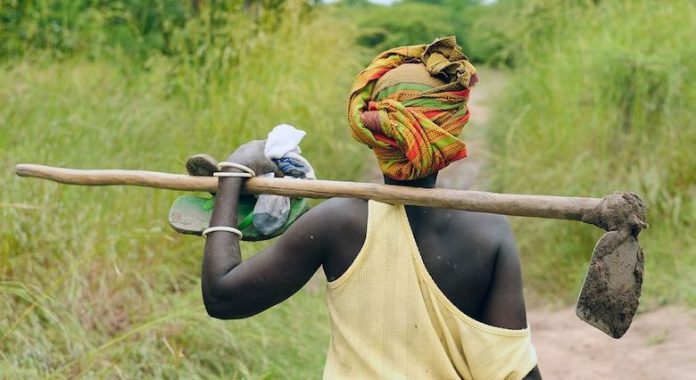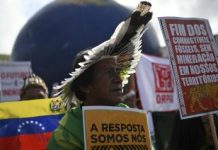Matteo Civillini
At the first board meeting of the Green Climate Fund (GCF) since President Donald Trump cancelled $4 billion in US pledges to it, countries sparred this week over who should plug the gap.
Board members representing Germany and Sweden encouraged governments outside the GCF’s existing contributor base – such as high-income developing nations – to open their wallets. But oil-rich Saudi Arabia, which would be included in that group, pushed back vehemently, calling the suggestion “unacceptable”.
The United States did not turn up to the meeting, leaving an empty seat among the board’s 24 members. But the White House’s decision to rescind its GCF contributions, promised under previous Democrat administrations, cast a long shadow over the discussions this week in Songdo, South Korea.
Threat to ambition
The loss of US funding puts at risk the GCF’s plans to significantly increase the amount of money it provides to programmes that help developing countries adopt clean energy and adapt to climate change.
The GCF’s latest fundraising round for 2024 to 2027 raked in an ambitious $13.6 billion – up from $10 billion in the previous four-year period – after then US Vice President Kamala Harris announced a $3-billion pledge at COP28 in Dubai. Another $1 billion was still due from a promise made under the administration of Barack Obama.
Flourish logoA Flourish chart
But, with the US money now off the table under an administration that has taken an axe to development aid and climate finance, the GCF expects to deploy just over $10 billion through 2027. That puts it on a path to only marginally exceed a “low” or “status quo” scenario as outlined in its strategy documents.
Ahead of this week’s board meeting, GCF Executive Director Mafalda Duarte had urged world leaders not to step back from channelling “critical” climate finance to the developing world through the UN’s biggest climate fund.
Wealthy developing states urged to chip in
Board members reiterated her calls for additional contributions, but disagreed on where the extra money should come from.
Germany’s representative named “high-income, non-traditional donors” as a potential source of funding, alongside “non-sovereign contributors” and the private sector. While the board member did not single out specific countries, German diplomats have previously called on China and the Gulf States to pay towards the new UN climate finance goal agreed at COP29 last November.
Lula’s government pushes for new oil drilling in the Amazon – where it will host COP30
In South Korea, the Swedish delegate encouraged existing donors to put more money into the GCF and urged those not currently contributing to do so “according to their capacity”.
“This fund has already expanded its donor base over the years,” he highlighted.
Ten countries outside the industrialised group of nations defined under the UN climate convention in 1992 have made voluntary contributions to the GCF since its creation, including Chile, Colombia, Indonesia, Mexico and Israel. The bulk of the funding still comes from developed countries, with Germany, Japan, the UK and France the biggest providers.
Saudi hits back
In response, Saudi Arabia’s representative fiercely opposed suggestions that developing countries should be asked to put more money into the GCF’s coffers.
“We’re finding it troubling that we see a few board members […] attempting to apply pressure on developing countries to make up the contributions of one of the largest historical emitters and the largest economy in the world,” he said, referring to the United States.
Japan disregarded widespread calls to raise its 2035 emissions goal
The Saudi official then called on colleagues from developed countries to apply the same pressure on their partners across the Atlantic.
Like many other petrostates, Saudi Arabia’s wealth has grown significantly since it was classed as a developing country in 1992. Its majority state-owned oil company Saudi Aramco made $121 billion in profit in 2023.
The GCF discussion ended without a conclusion on how to make up the funding shortfall.
New projects and ‘regional presence’
In other business, the GCF board approved investments of $686.8 million for 11 projects spanning 42 countries at this week’s meeting, including its first ones in Togo and Serbia, bringing its total funding to $16.6 billion – three-quarters of it provided as grants.
“During these challenging times, GCF is showing how countries are able to reaffirm their individual and collective commitment to accelerating support to climate-vulnerable communities,” GCF board co-chair Leif Holmberg, also from Sweden, said in a statement.
The Green Climate Fund’s board meeting in Songdo, South Korea, this week. Photo: GCF/Flickr
The GCF expects to approve up to $3 billion in new projects in 2025 and aims to grow its total portfolio to at least $50 billion by 2030. But a spokesperson for the fund reiterated that “if pledges are not fully realized, our ability to support the climate ambitions of developing countries will be constrained”.
Aside from the US, Italy and Hungary have not yet confirmed pledges made in the latest fundraising round, while France and Canada have provided only partial confirmation of theirs. But the GCF’s administrative unit told board members that it “does not foresee any issues” with non-US money flowing into the fund.
The GCF board also decided this week to establish “a regional presence” to bring it closer to the countries it serves and to increase the climate impact of its projects, it said. The details are still to be worked out.
“If climate action is local action – which it is – then the Green Climate Fund needs to be local too,” said GCF chief Duarte. “I’m pleased that the Fund has taken a historic step in establishing a presence in key regions, bringing our world-class specialists closer to those who will benefit most from their support.”

















